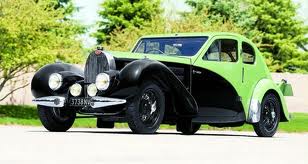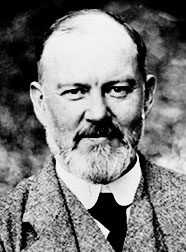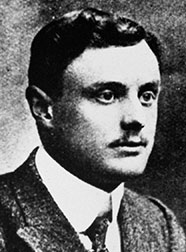|
|
|





Rolls-Royce Limited was created over a famous lunch in May 1904. Henry Royce, a successful engineer, struck a deal with Charles Rolls, owner of one of the first car dealerships. The rest is history. The ensuing series of two, three, four and six cylinder cars broke the mould for engineering and craftsmanship. The Silver Ghost, launched in 1907, was a car of legendary smoothness that completed a 14,371 mile virtually non-stop run, creating 'the best car in the world' legend.

Charles Rolls studied mechanical engineering at Cambridge. The first undergraduate to own a car, he soon began racing. To fund his passion he set up a dealership, selling mostly foreign cars. His search for a supplier of reliable English cars led to his introduction to Henry Royce.
The first aviator to complete a double-crossing of the English Channel, he was killed in a crash at an air show in July 1910.

Known for his attention to detail and pursuit of perfection, Henry Royce registered his first patent (the bayonet lamp socket) in 1887. His company produced dynamos, electrical motors and cranes.
Dissatisfied with his Decauville, Royce decided to improve on it and turned his attention to building the best cars in the world. By 1903 he had designed and built his first engine. His first prototypes took to the road in 1904.
Gearbox: 7 Gear DSG, fuel consumption combined: 24.9l/100km, fuel consumption in town: 41.9l/100km, fuel consumption out of town: 15.6l/100km, CO2 emission combined: 596g/km, Efficiency Class: G
Annual tax for this vehicle €1132
Energy costs at a mileage of 20,000 km:
Fuel costs (Super Plus) at a fuel price of 1.624 EUR/billing unit €8087.52
Created on: 11/30/2011
The values were calculated using the prescribed measurement method (§ 2, numbers 5, 6, 6 per car energy labeling ordinance in its current version).CO2 emissions, which result from the production and provision of fuel or other energy sources are not taken into account in the determination of CO2 emissions pursuant to Directive 1999/94/EC. The figures do not refer to a specific vehicle and are not part of the offer, but only serve the purpose of comparing different vehicle types. The fuel consumption and CO2 emissions of a vehicle not only depend on the efficient utilization of the fuel by the vehicle, but also on driving style and other non-technical factors. CO2 is the main greenhouse gas responsible for global warming. Notice pursuant to Directive 1999/94/EC of each current valid version: For more information on official fuel consumption and the specific official CO2 emissions of new passenger cars can be acquired from the "Guide for Fuel Economy, CO2 Emissions and Power Consumption of New Passenger Cars" available at all sales outlets and at DAT German Automobil Treuhand GmbH, Hellmuth-Hirth-Strasse 1, D-73760 Ostfildern – available free of charge or at www.dat.de. Efficiency classes of vehicles are evaluated in terms of CO2 emissions by means of the vehicle's empty weight.